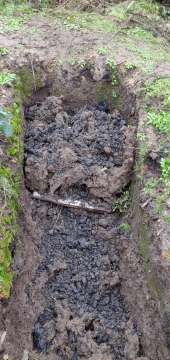sam na wrote:
I guess if no-one has done any testing to see how effective hugelculture is, then I could do some trials myself.
I'll try a few beds with and a few beds without wood and see if I can see any difference in my salad crops.
There are many various techniques for hugel culture. From pits to terraces, to raised beds, to mounts. From wood chips to branches to large logs. Each situation might warrant a different technique. Plus it depends on the resources you have available. If you have large logs than that is what you try to use, If you only have access to small branches then you would use that.
----
Sam, tell us more of your project. And do take lots of pictures of your trials and share the your method and why plus the results with us all.
---
We do a lot with hugel culture, but have not yet had much time behind us. Most of our projects involve creating hugel culture terraces as our ground is heavy clay with saturated soil for all of the spring time and I wanted our sea buckthorn (sea berry) plants to be above the saturated heavy clay as they do not like wet feet.
Here are two of the hugel culture terraces that we built on a slope on contour. With the terraces we have less of a slope, so it is easier to walk between the plantings.
I share my story here:
Go Permaculture Food Forest - our suburban permaculture journey









